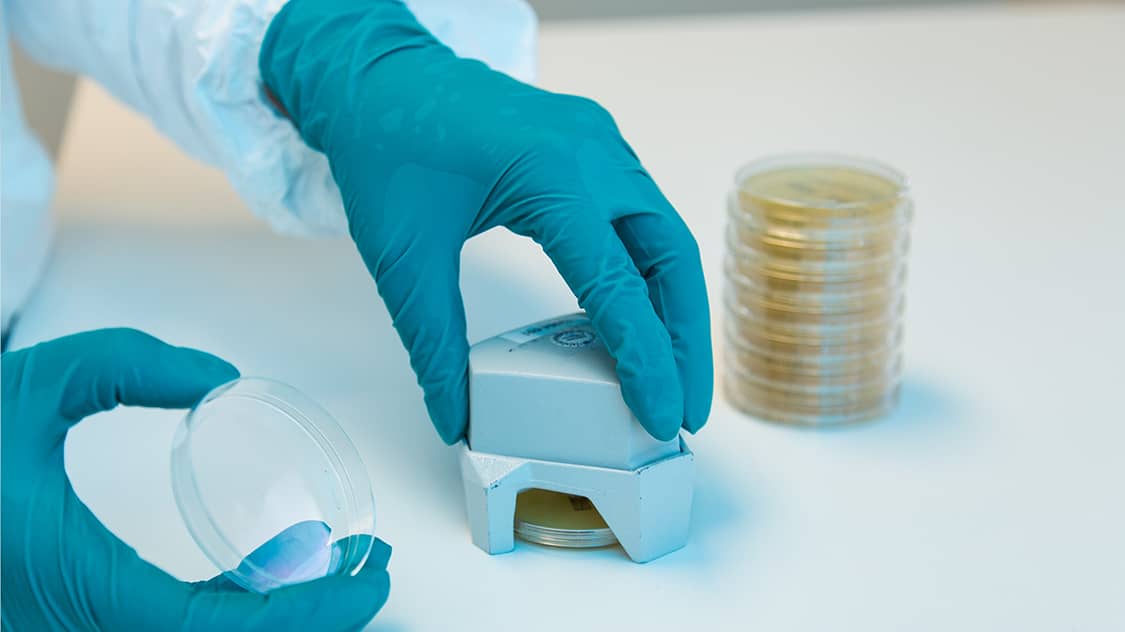Regulatory guidelines for the manufacturing of pharmaceutical products are to be found in many national directives and legislative texts (EU-GMP, USP, Ph. Eur. ISO, AMWHV, FDA etc.). Their implementation is an integral part in guaranteeing a hygienic production environment. Surfaces, the room air and people will all be tested. Experience of sampling and evaluation of the results from the point of view of risk management are factors in successfully fulfilling hygiene standards. Determination of the germ count must be carried out in a GMP accredited laboratory.
As a GMP-accredited and FDA registered leading contract laboratory in Switzerland, we can offer you holistic consultation in the areas of microbiology and hygiene monitoring. We can help you in defining a hygiene concept, taking your own specifications into account.
Would you like to know where the Critical Control Points (CCP) as part of the HACCP concept are? Which surfaces should be sampled and do you require support in your sampling?











